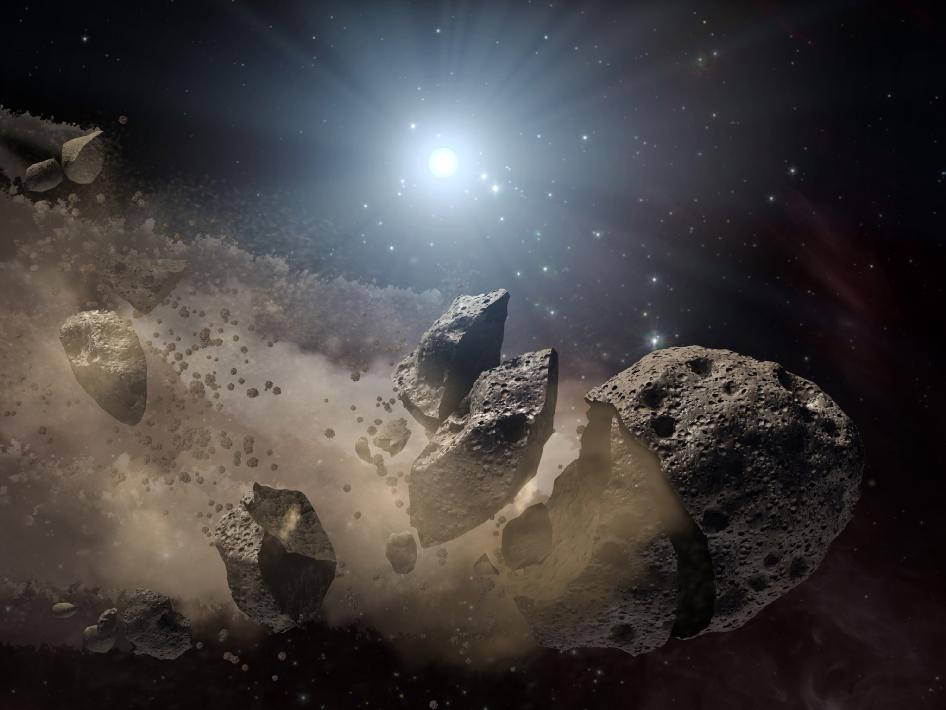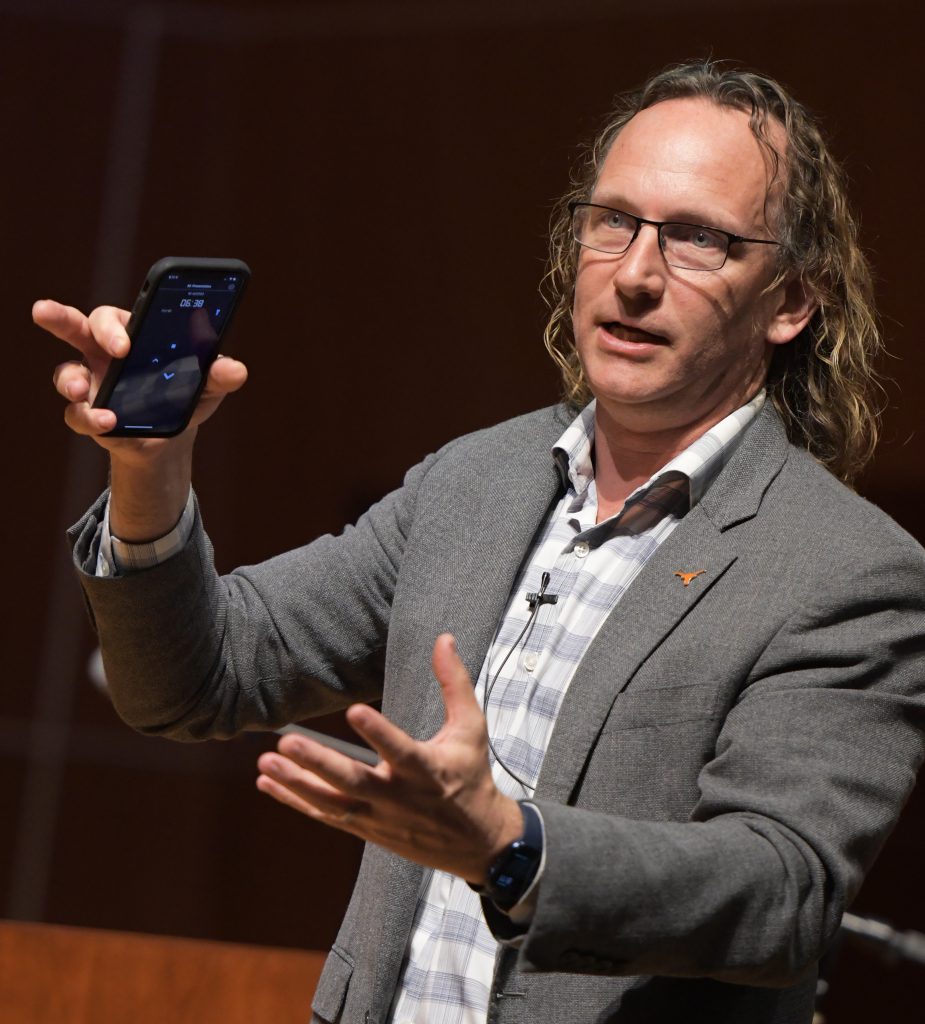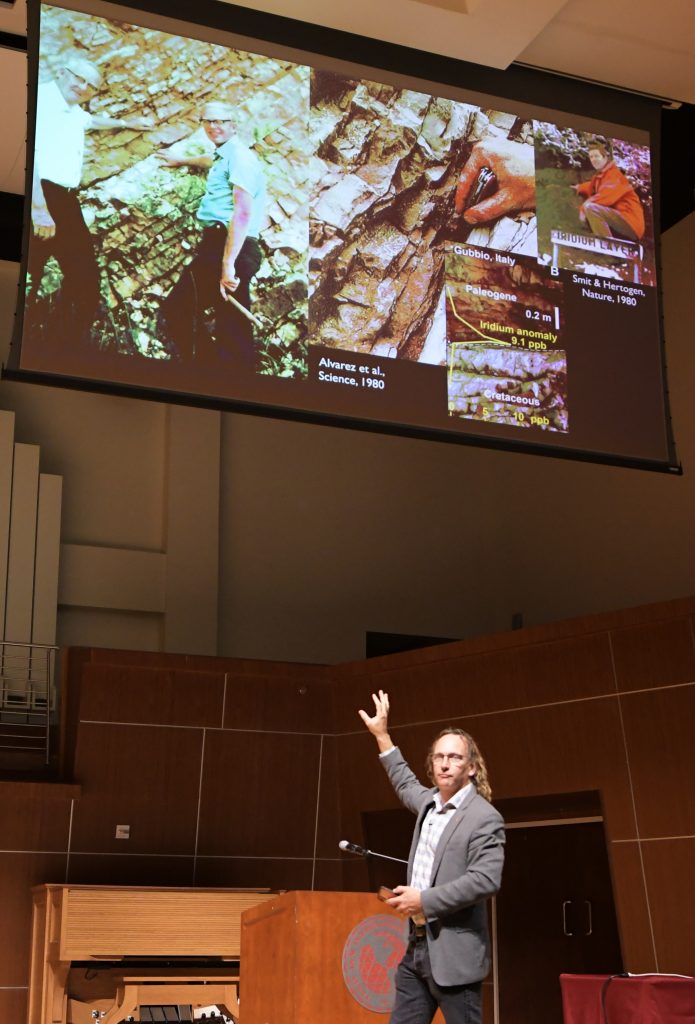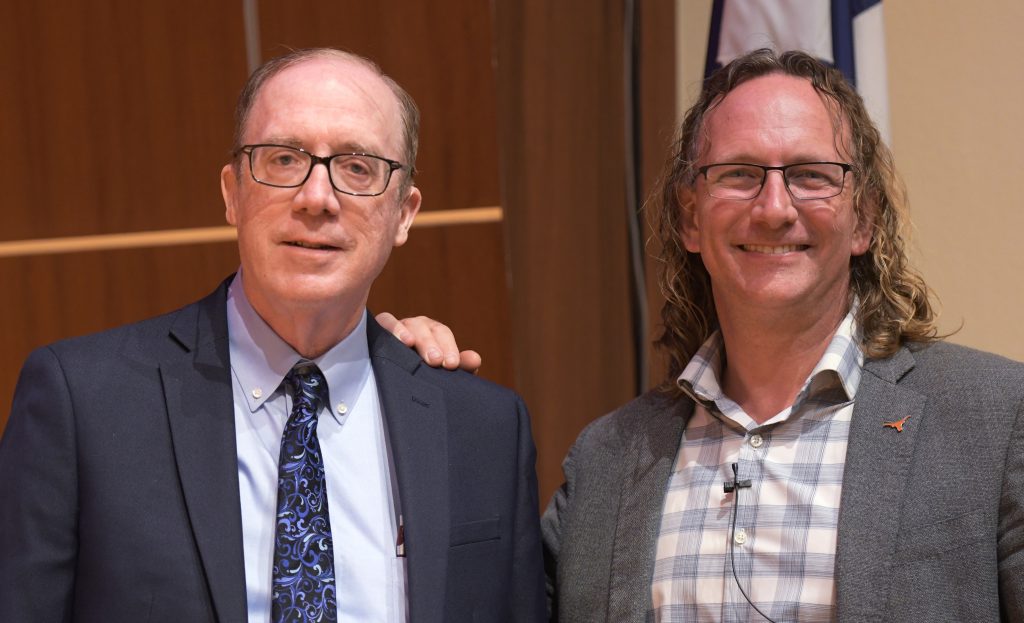SCIENCE: Lecture examines asteroid impact on dinosaurs
From Staff Reports
Published Tuesday, March 29, 2022
Updated Monday, April 11, 2022, with photos from the event
Tomorrow’s special lecture proposes a look at the asteroid that scientists say ended the last era of dinosaurs about 65 million years ago.

This NASA artist’s concept shows a broken asteroid. Scientists believe a giant asteroid, which may have originated in the Main Asteroid Belt of the Sol System, made its way to Earth and possibly brought about the end of the dinosaurs. NASA’s WISE mission ruled out the leading suspect, a member of the Baptistina family of asteroids.
Scheduled for 7 p.m. tomorrow in the Texas A&M International University Center for the Fine and Performing Arts Recital Hall, Room 236, Professor Sean Gulick of the Jackson School of Geosciences, University of Texas-Austin looks at the Chichulub asteroid’s impact on Earth history.

Dr. Sean Gulick of the Jackson School of Geosciences, University of Texas-Austin, answers questions from the audience about dinosaurs and the Chicxulub asteroid impact geologic survey he worked with during a presentation Wednesday evening, March 30, 2022, at Texas A&M International University’s Center for the Fine and Performing Arts Recital Hall. This asteroid impact, located along the Gulf of Mexico coast on the Yucatan Peninsula, is the one scientists believe killed off the dinosaurs about 66 million years ago. The event was sponsored by the College of Arts and Sciences and the Lamar Bruni Vergara Planetarium at TAMIU.
For decades, paleontologists and other scientists looked at the Yucatan Peninsula site in Mexico for several reasons. One such reason includes the iridium anomaly in this layer of the fossil record, or rock strata. Iridium, a rare metal, typically associated with extraterrestrial impact events by asteroids, shows up in an unusual abundance along the border of numerous mass extinction-level events on Earth–including along the Cretaceous and Paleogene boundary.

Dr. Sean Gulick of the Jackson School of Geosciences, University of Texas-Austin, speaks about the Chicxulub asteroid impact geologic survey he worked with during a presentation Wednesday evening, March 30, 2022, at Texas A&M International University’s Center for the Fine and Performing Arts Recital Hall. This asteroid impact, located along the Gulf of Mexico coast on the Yucatan Peninsula, is the one scientists believe killed off the dinosaurs about 66 million years ago. The event was sponsored by the College of Arts and Sciences and the Lamar Bruni Vergara Planetarium at TAMIU.
The lecture is free and open to the public, with support from Guillermo “Memo” Benavides and organized through the College of Arts and Sciences and its Lamar Bruni Vergara Planetarium.

Texas A&M International University Director of the Lamar Bruni Vergara Planetarium Peter Davis, left, with Dr. Sean Gulick of the Jackson School of Geosciences, University of Texas-Austin, during Gulick’s visit Wednesday evening, March 30, 2022, at TAMIU’s Center for the Fine and Performing Arts Recital Hall. This asteroid impact, located along the Gulf of Mexico coast on the Yucatan Peninsula, is the one scientists believe killed off the dinosaurs about 66 million years ago. The event was sponsored by the College of Arts and Sciences and the Planetarium at TAMIU.
